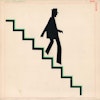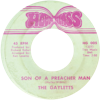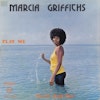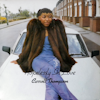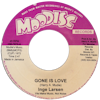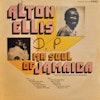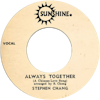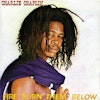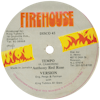Some people say give me Booker T.,
But I say give me Marcus Garvey.
They said Marcus Garvey was looking for war,
So I asked him what did Booker T. did before.
They said he gave the Negro nation a class education,
And that was Booker T.’s chief ambition.
But his honor Marcus Garvey started fight for liberty
Universally.
–Wilmoth Houdini, “African Love Call” (1934)
Bop, I once said, is the Marcus Garvey extension.
–Duke Ellington, Music Is My Mistress (1973)


Immortal Phantasm
Some ghosts go on haunting for decades. They might do that by spurring the creation of music that moves bodies and souls to the core, for the ages.
Marcus Mosiah Garvey and his immortal phantasm have done that. Born in colonial Jamaica 134 years ago, Garvey was a wide-traveling Black nationalist leader, pioneering instiller and distiller of buckets of pride in African roots, skilled orator, tireless advocate of self-reliance and Pan-Africanism, commercial entrepreneur and manager of mixed result, and an early target of J. Edgar Hoover. Deemed a visionary and a prophet, although with decidedly human qualities and failings, he drew fame, controversy, and a huge intercontinental following between the two world wars. Garvey carried out his work from Kingston and Harlem to London and the Caribbean coast of Central America, as well as on the vast Atlantic on scrappy ships sailing under the ensign and Black command of the Black Star Line, itself a subject of songs in the 1920s and the 1970s. He influenced thinking as far away as West Africa, notably in the person of Ghana’s first post-independence leader, Kwame Nkrumah.

Who besides Jesus, Mohammad, Moses, Mother Mary, or Jah has inspired the musical or poetic output of artists such as Max Roach, Burning Spear, Randy Weston, Sinéad O’Connor, Culture, Tarrus Riley, Majek Fashek, the Skatalites; various calypso performers of solid reputation in New York (the “Calypso King” Wilmoth Houdini among them), Panama, and Costa Rica; the Mighty Diamonds, Big Youth, Mutabaruka, and one quietly fiery Faybiene Miranda? (The last gave voice to a bluntly worded political challenge in the enduring, and once banned-in-Kingston, hematite-heavy roots reggae song “Prophecy” in the mid-’70s. The song was produced and championed by powerful Jamaican music maker-or-breaker Jack Ruby [real name: Lawrence Lindo]. And here’s a mix of “Prophecy” with heavier bass—and more guitar through a distortion filter, it seems).

And the disembodied spirit aided the coining of titles. Take “Garvey’s Ghost.” Both Roach, the late master drummer and composer of secure stature in jazz, and the living Jamaica roots legend, Winston Rodney (aka Burning Spear), a man of aural and reputational resonance lasting a half century, recorded very different works of music that carry that same name. Yet those recorded works share certain intangible qualities that speak to the soul.
Roach recorded his imagining of “Garvey’s Ghost” in 1961. Opening the drummer’s Percussion Bitter Sweet LP, the tune is a bebop-meets-Afro-Cuban drum-and-brass triumph featuring the stellar horn-playing of trumpeter Booker Little and saxophonist Clifford Jordan. Roach himself delivers a room-hushing solo on taut drumheads and hammered metal, with accents on the latter, à la Joe Jones and Kenny Clarke. It displays its creator’s up-front awareness of—and a hopefulness (amid growing anger about mistreatment and martyrs’ murders) for—a civil rights tsunami that was building in the U.S. even as many nations in Africa were gaining independence. Noah Baerman, a pianist and jazz educator at Wesleyan University, calls the tune “driving, haunting, and very modern.” Roach blazed trails “in multiple modern movements in jazz,” Baerman tells Wax Poetics.
The Garvey’s Ghost of Burning Spear holds its place as an early dub jewel of a record made in Jamaica in 1976. It funhouse-mirrors, in serious fashion, the tracks etched in vinyl a year earlier on Spear’s future classic vocal album titled, logically, Marcus Garvey. Again, Jack Ruby and associates were key to those records being heard in memorable ways. Burning Spear met global recognition after the two records were issued by Chris Blackwell’s Island Records.
In each of the takes on “Garvey’s Ghost,” fittingly, one can hear and feel the reverent, spiritual signals that mark the melodies, rhythms, and words wielded so effectively, and pleasurably, by Roach and Spear. Many other artists who invoked Garvey’s name, before and after the ’60s and ’70s, also imbued much of their music with a conscious spirituality. More and more often, that would be coupled with a keen awareness of Africa as motherland and outreach to the continent across the ocean.

Marley, Garvey, and Self-Emancipation
Then there is Robert Nesta Marley and the story of how a speech in Canada eighty-four years ago proved essential to one of the most memorable songs ever committed to vinyl.
In the summer of 1937, Garvey attended the annual conference of the Universal Negro Improvement Association (UNIA) in Toronto. Founded by Garvey in 1914, UNIA had a membership that spanned continents. For decades, the association had become important as a social bulwark and a helping hand in the everyday lives of Blacks, from Canada to South America, London to coastal West Africa. When the meeting was over, Garvey remained in Canada until the fall. On his last night in the country, October 1, he spoke in Menelik Hall in Sydney, Nova Scotia. The maritime province had been populated by slaves and freedmen and -women and, later, by Black factory workers from the Caribbean. Garvey was intent on leaving his audience with a message that would last, according to biographer Colin Grant, author of the 2008 book Negro with a Hat: The Rise and Fall of Marcus Garvey.
“We are going to emancipate ourselves from mental slavery, because whilst others might free the body, none but ourselves can free the mind,” Garvey said to the packed hall, which was named for an Ethiopian emperor who had successfully resisted Italian invaders. The text of the speech was printed in The Black Man, a magazine that Garvey published.
The words form a core message of Rastaman Marley’s quietly potent “Redemption Song,” a freedom-yearning ode to struggle that starts its journey with the words “Old pirates, yes, they rob I / Sold I to the merchant ships.” Reggae’s first and preeminent global superstar—born in Saint Ann Parish, on Jamaica’s north coast, where Garvey also started life—repeated the fragment from the 1937 speech in the song, which has been covered by many.
“Redemption Song” was the last song on Marley’s last album, 1980’s Uprising. He wrote it while suffering from the cancer that would end his life in a Miami hospital in 1981 at the age of thirty-six.
And Marley employed another reference to Garvey in song. The Black nationalist leader often would cap his speeches and writings with a cry of “One Love!” He did that in his famous 1925 open letter that urged his followers to “look for me in the whirlwind.” Garvey addressed that lengthy message to “the Negroes of the World” after he entered the federal prison in Atlanta to serve his sentence for a mail fraud conviction stemming from sales of shares in Black Star Line, Inc.

7/7/77 and a Song by the Sea
A standout scene in Rockers, Ted Bafaloukos’s landmark, loosely plotted 1978 feature film on life and music in Jamaica, may also be the feature’s quietest. The song that is central to the clip shows the masterful, almost mystical talent of Burning Spear as he testifies to the prescience of Marcus Garvey. In under two and a half minutes, Winston Rodney—aka Spear—demonstrates the power of simplicity when a message is delivered with tranquil soulfulness and with vocal pipes of clean sand, rough and smooth, like a fine beach:
Scene: A thin man in a track suit, drummer Leroy “Horsemouth” Wallace, appears. Playing himself, Wallace is the protagonist of the Rasta take on the Robin Hood tale that centers on the theft of his Honda road bike. It’s a special motorcycle. In the film, a red, green, and gold Lion of Judah is hand-painted on the gas tank by future legend Jah Wise. Wallace goes to the night-time yard of Winston Rodney—Burning Spear—to air the matter and think. The two proceed to a half-ruined grey stone arch, climb it part way, and sit down, side-by-side, facing the camera under little more than moonlight. In the background, Caribbean waves break gently. Spliffs are lit. Rodney sings a capella—slowly, gently, but clearly. Wallace nods and bobs his head to the music without speaking.
They tried to fool the Black population
By telling them that Jah Jah dead
And they tried to fool the Black population
By telling them that Jah Jah dead
I and I knows that Jah no dead
Jah no dead, Jah no dead, Jah no dead, Jah no dead, Jah no dead
Oh no, no-oh-oh, Jah no dead
My knowledge increase
My memory reflect, Marcus Garvey did say
A rumor, rumor, rumor, rumor, rumor, Marcus say
A rumor, rumor, rumor, rumor, rumor, ah Marcus say
Jah no dead, Jah no dead
Verses go on to tell about how the “lion did crown the king” in Addis Ababa. That refers to the most dominant prophecy widely credited to Garvey by Rastas: that a Black monarch shall rise in Ethiopia, as Haile Selassie—named Ras Tafari—did in 1930. Hence the Rastafari sect that formed in Jamaica in the early to mid-twentieth century as an alternative to organized Christianity and as an antidote to the wickedness and avarice of the profane “Babylon” of Western civilization. Spear ends the tune by quietly urging the singer’s unseen companion to “meet me at the bank of the beautiful river when your journey has end / I and I will discuss about this matter.”
Burning Spear’s voice resonates as he fades out his song. He sings and hums the high octave from the root note, laying the song down on a bed of honeyed silk. Horsemouth smiles big as the scene closes, the Caribbean still washing the beach.
In his excellent 2020 cinema book, Rockers: The Making of Reggae’s Most Iconic Film, a loving and frank grace note to the film, Bafaloukos wrote that the scene centering on Spear singing beside Horsemouth made for “the sweet memory” of a “magical evening.” The date was July 7, 1977. The locale was Saint Ann’s Bay, the birthplace of both Marcus Garvey and of Winston Rodney. Filmmaker Bafaloukos had awakened “around noon, feeling sick all over” after a difficult time filming.
“This day, (7/7/77) is believed to be a fateful day, according to many Rastas. Songs had been written about it, about Marcus Garvey’s prophecy that ‘when the two sevens clash, there will be Dread,’” Bafaloukos wrote, reciting the line from one of Culture’s most memorable songs. “[S]o this is the fateful day, in a fateful year.”
Bafaloukos described Rodney and Wallace ascending the stone arch, and the man known as Spear singing his song in a spare style: “A huge crowd had gathered to watch, but not a voice was heard, not a twig cracking under anybody’s foot during the whole time we were there. Behind us, a yellow moon was rising. My sickness was gone,” recalled the Greek-born Bafaloukos, a graduate of the Rhode Island School of Design who had fallen in love with Jamaica.
In a Vice interview in 2010, Bafaloukos also answered a basic question about the Rastafari sect. “Who are the Rastas?” he was asked. In his response, he linked the sect to the Jamaican Garvey. “Reggae and Rasta go together, they became a single thing,” he said. “They became the reason every young guy in Kingston could say, ‘Yes, now I have a flag, I have a nation, a God, and now fuck you, white guy. And you too, baldy.’ Marcus Garvey was a key figure in all this. Garvey tried to organize black people and to persuade them to return to Africa.”
In the Vice interview, Bafaloukos was asked why he didn’t have palm trees and beaches—“the typical Jamaican ingredients”—in his film. “It’s done on purpose,” the filmmaker responded. “My aim in the film was very simple: From the beginning I thought of it as a song, and so the issue was not what to include, but what I would leave out. I had to choose. You can’t fit everything in a film.” (He also said that he didn’t cast Bob Marley in Rockers because then the movie would have been about Marley, who had already become a global star.)
The filmmaker knew that he had captured lightning in a bottle in making Rockers. And not without difficulty. Bafaloukos and his film crew weathered much daily chaos on and around the set. Fires had to be put out, sometimes literally. Situations were defused. Bafaloukos said Rockers cost about $500,000 to make. He didn’t earn much money from it, until the film was issued on DVD much later, he told Vice. The intrepid, lucky, very capable, and patient filmmaker died in 2016.

Burning Spear, Torch Bearer
Marcus Garvey, born in 1887 in Saint Ann’s Bay, Jamaica, is fortunate to have a tuneful missionary and faithful reminder in the person of Burning Spear. Winston Rodney, or Spear, was born in 1945 in a neighborhood in the same town and only a few blocks from his hero’s birthplace, as Rodney told Los Angeles Times writer Don Snowden in 1980.
Burning Spear first paid homage to the early Black nationalist firebrand in 1975 in his masterpiece of an album titled, appropriately, Marcus Garvey. That was after he had already won notice working out of the stable of producer Coxsone Dodd’s Studio One in Kingston. Marcus Garvey was produced by Ruby, known as the operator of a sternum-shaking sound system in Ocho Rios. (Sound systems, with tube-driven strato-volume and bottomless bass, were fixtures for dancing and serious music-listening in yards in the capital and elsewhere.) Backers on the LP’s tracks were the hard-working Black Disciples. That assemblage included, among others, Horsemouth Wallace on drums, Robbie Shakespeare and Wailer Aston “Family Man” Barrett on bass, Earl “Chinna” Smith on lead guitar, Bernard “Touter” Harvey on keys, and ace horn players Bobby Ellis, Vincent Gordon, Richard Hall, and Herman Marquis. Carlton Samuels handled flute.
When the Marcus Garvey LP was brought out on the Island label in 1975, sales flew past those for Marley’s Natty Dread, Wallace recalled, speaking to longtime reggae writer David Katz for the liner notes of the 2010 reissue of Marcus Garvey. “It was unbelievable,” he said. Burning Spear became an international star, touring the U.S. and the U.K., among other places. He—for Winston Rodney soon became synonymous with Burning Spear, the singing core of which was a trio at the time—put on a memorable concert in New York’s Central Park in 1976.
By way of indelible tunes such as “Marcus Garvey” and “Old Marcus Garvey,” along with the bouncing, majestic “Slavery Days,” Spear urges listeners to heed Garvey’s warnings about those who would and did put down Black people or held them in bondage, and to remind themselves of the UNIA leader’s messages about pride and struggle. And there was the admonition to remember Garvey, whose words were too often forgotten, as Spear and other notable practitioners of Jamaican roots music have said.


In “Old Marcus Garvey,” Spear homes in on that historical amnesia. He mentions the hero of Jamaica’s Morant Bay rebellion of former slaves in 1865, Paul Bogle, and compatriot George William Gordon. Also mentioned are Norman Washington Manley, advocate of voting and labor rights and founder of the progressive People’s National Party (and father of Michael Manley, prime minister of Jamaica in the 1970s and from 1989 to 1992); and Alexander Bustamante, the first prime minister of an independent Jamaica and the founder of the conservative Jamaica Labour Party. The bluesy reggae shuffle features finely honed harmonizing by the three original members of Burning Spear, before Rodney cemented the single-person identification:
No one remembers old Marcus Garvey.
No one remembers old Marcus Garve-e-e-ey.
No one remembers him, no one.
They been talking about Paul Bogle.
They been talking about William Gordon.
They been talking about Norman Washington Manley,
Including Bustamante.
No one remember old Marcus Garvey.
No one remember old Marcus Garve-e-e-ey.
Winston Rodney assumed his lifelong mission to honor Marcus Garvey in the mid-1970s, as he suggested to writer David Katz. Some older people in Saint Ann’s Bay knew a lot about the charismatic hometown figure, but younger people didn’t, Rodney said, according to Katz’s fulsome, fine 2003 book Solid Foundation: An Oral History of Reggae. People said different things about the pioneering Jamaican Black nationalist and advocate of a return to Africa. Rodney started his own research on Garvey, he told Katz. Garvey, a talented if incautious speechmaker, would be formally named a Jamaican national hero in 1969.
The man who became known as Burning Spear drew his stage moniker from the first name, translated from the Kikuyu, of Kenyan independence fighter Jomo Kenyatta. (A 1961 New York Times profile of Kenyatta leads with these words: “JOMO KENYATTA wears an appropriate name. Jomo means Burning Spear in the Kikuyu language and he has been a burning spear in the side of British colonial rule in East Africa since 1946.”)
Rodney started his own research to check if “anyone were there singing about Marcus Garvey, but no one was really hitting that point musically, so I decided to get into that,” he is quoted as saying in Solid Foundation. “I think the message from Garvey really stands out, not only for me, but for a lot of other people,” Rodney continued. “I think Garvey did have a strong plan, and if more people did pay attention to Garvey and his work it’s possible things would be more easier for folks like we today. More people has forgotten Marcus and his philosophy and his doctrine, ’cause people get carried away,” Rodney told Katz.
In his talks with Katz, Burning Spear also addressed his history, and his and his people’s place in it. For Rodney, who has lived in Queens, New York, for many years, potent musical chronicles such as “Slavery Days” amount to touchstones and necessary nudges for the collective memory. (Hear and see a fresher take on the old song here.)
“Those songs was part of my history, part of my heritage, the struggling of my people. Knowing that I am an African descendant, an African-Jamaican, those songs based upon the struggling of black people overall—not only [in] Africa,” Rodney declared in Solid Foundation. “Those songs carrying a different concept, sending a different message.”
Over the years, the voice that is a vessel for those songs sparked writers’ efforts to capture the sound with the right words. Writing in the Los Angeles Times, Don Snowden called Spear’s voice “the vocal equivalent of Guinness Stout—rich and grainy, dark and gritty.” He wrote about a common compliment for singers: that they could sing the phone book, turning the mundane into the sublime. “But Spear, who has been described as a shaman or village elder passing on cultural traditions, could turn it into a mystic incantation,” Snowden wrote in 1989.
The late Timothy White, writing in his authoritative biography of Bob Marley, 1983’s Catch a Fire, traced a capsule history of Burning Spear. The initial trio, Rodney and skilled harmonizers Delroy Hines and Rupert Willington, was belittled by Kingston music producers. However, the band was cannily picked up by Coxsone Dodd for recording at his famed Studio One. The put-downs are said to have stopped after Spear began making hits with what White called “lead singer Winston Rodney’s echo-y bottom-of-the-well baritone and bush themes.”
For me, Spear’s voice is smoke, coconut, Scotch bonnet pepper, sugar, and allspice. What might be in the air (with the scent of sacramental ganja) around an open cooking fire at night in a cool Garden Parish clearing amid a gathering of friends in the hills. (Here is Burning Spear’s tune of quiet celebration of the everyday, “Man in the Hills.”)
In albums such as 1978’s Social Living, Burning Spear continued the gospelizing on Garvey. The tracks “Marcus Children Suffer,” “Marcus Senior,” “Mister Garvey,” and “Jah No Dead” build on the theme. All but the last did not succeed as total packages quite as well as the standout tunes from the ’75 LP Marcus Garvey. In more recent years, and especially in the early 2000s, the instrumental side of Spear’s music ventured into jazzier realms, by way of the brass hardware of well-played horns complemented by spot-on guitar, keys, and percussion, including congas by Rodney himself. Burning Spear has maintained his fire and sharpness in concert. His performances burnished his reputation for putting his soul into events of true, deep music.


Jazz Giants Mindful of Marcus
Titanic jazz innovators Max Roach and Randy Weston hung out and mulled music from the time of their youth in Brooklyn. The friends’ stomping grounds were the fertile soil for Black musical creativity, as well as of political and social awareness, known as Bedford-Stuyvesant, Brooklyn. In the 1940s and ’50s, jazz musicians—both budding and veteran—hung out at Trios, the restaurant on Sumner Avenue that Weston’s father opened during World War II. Not only was there food in the luncheonette that Weston, the son, came to manage for a time, “we also had the hippest jukebox in the area,” he recalled in his 2010 autobiography.
Drummer Roach and pianist Weston count the life of Marcus Garvey as one subject of history about which they both were very aware. A bond share was there. And Frank Weston, Randy’s father—who told his son about Garvey’s messages from an early age—made sure that if you were a musician spending time in Trios, you would be conscious of what was going on in the nation and the world. Weston senior was born and raised in Panama, and also had lived in Costa Rica. But Frank Weston’s forebears came from Jamaica, one of the Caribbean islands that was the first homes of many thousands of laborers who migrated to Panama to dig the U.S. canal starting in 1904, and, earlier, in the mid-1800s, to build the transisthmian railway and a failed French canal. Garvey’s UNIA, which had many members on the Atlantic sides of Panama and Costa Rica, was well known among Afro-Caribbean immigrants who settled in Bed-Stuy. In 1987, Sumner Avenue would be renamed Marcus Garvey Boulevard, the name emblazoned on signs today.
Weston said at a 1997 conference on jazz and civil rights that his father, who was a strong influence on his life, “was a great lover of Marcus Garvey.” And Roach recalled in a 1999 interview with music scholar Ingrid Monson that the legacy of Garvey was strong in Brooklyn. Roach counted Garvey’s “interest in Africa, global black unity, and economic self-determination” as some of the things that sparked the drummer’s own interest in Africa, wrote Monson, the Quincy Jones Professor of African American Music at Harvard, in her 2007 book, Freedom Sounds: Civil Rights Call Out to Jazz and Africa.
“Well, that all came about from Marcus Garvey, you know,” Roach told Monson. “Marcus Garvey was in the black community—and still is—one of the major heroes, even though he went to jail and all that kind of stuff. He really was very revolutionary.” (Garvey served time in federal prison in Atlanta for mail fraud. President Coolidge commuted his sentence in 1927, and he was deported that year from the U.S.) Weston remembered fondly “his father cooking for ten or more musicians after hours and challenging them to justify whatever they were doing musically, spiritually, and politically,” wrote Monson. The scholar said in 2016 that Weston “opened new vistas for me on the legacy of Marcus Garvey in Brooklyn.”
On reading about the genesis of much of the music called jazz that came out of New York in the mid-twentieth century, it was clear that Garvey and Garveyism—manifested in massive parades in Harlem after World War I as well as, later, musicians’ late-night talk over food in Brooklyn—provided a bridge between what had formed African Americans (and people of Afro-Caribbean ancestry) and the growing consciousness of Africa among those in the Black diaspora.
Duke Ellington saw that in the playing of a trombonist in his band, a Garvey advocate named Joe “Tricky Sam” Nanton. He, like Weston, reflected what seemed to be wired into musicians who were of Afro-Antillean ancestry. Ellington wrote in tribute to Nanton: “What he was doing was playing a highly personalized form of his West Indian heritage. When a guy comes here from the West Indies and is asked to play some jazz, he plays what he thinks it is, or what comes from his applying himself to the idiom.
“Tricky and his people were deep in the West Indian and the Marcus Garvey movement,” Ellington continued in his 1973 book, Music Is My Mistress. “A whole strain of West Indian musicians came up who made contributions to the so-called jazz scene, and they were all virtually descended from the true African scene.”
Ellington suggested there were links among jazz, and the movement by musicians toward Islam in the 1960s and early ’70s, with the connection with Garveyism and those with Caribbean roots. “It’s the same now with the Muslim movement, and a lot of West Indian people are involved in it. There are many resemblances to the Marcus Garvey schemes,” he wrote.
“Bop, I once said, is the Marcus Garvey extension,” added Ellington enigmatically. Without presuming to put words in the great composer’s mouth, we can surmise that he was tying the rise of bop and later of Black consciousness among jazz artists to Garveyist upbringings—that is, the new, envelope-pushing musical style was an extension of social and historical forces at work in Harlem and Brooklyn, especially among people with Afro-Caribbean roots.
Ingrid Monson cited the writings of Village Voice critic Norman Weinstein, in his 1992 book titled A Night in Tunisia: Imaginings of Africa in Jazz, when she wrote in Freedom Sounds: “Garvey’s legacy is especially important for understanding the long history of linking spiritual, political, and African interests in African American culture and its impact on the jazz world of the 1960s.”


Max Roach and Randy Weston were the embodiment of that kind of ’60s- and ’70s-era cultural, political, and spiritual linkage, with Africa at both the roots and forming new musical branches. A musician who combined his composing, band-leading, and performance with a determined struggle for civil rights starting in the 1950s, Roach dedicated his take on “Motherless Child” to Garvey. That was recorded with the J.C. White Singers in 1971, on the gospel/spiritual/jazz album Lift Every Voice and Sing. Further examples can be found in Africa-imbued works such as “The Glorious Monster,” on the revolutionary, only drums-and-percussion, eponymous M’Boom LP, from 1980.
In Roach’s quotations in the liner notes about his composition “Garvey’s Ghost,” released in 1961 on the Percussion Bitter Sweet LP, he described the man for whom the tune was written, and likely raised the awareness of many jazz fans who had never heard of Garvey. Roach described the UNIA founder as “a leader in the organizing of hundreds of thousands of black people all over the world,” and added: “Because these people represented a large labor force, the movement became powerful.”
Roach told of how Garvey was deported from the U.S. and died in England. “Although he is supposed to have died of natural causes, there is still an aura of mystery surrounding his death,” Roach said of the leader who died in 1940. “Many of Marcus Garvey’s dreams and ambitions are currently reaching fruition in the new, independent nations of Africa.”
Weston, who lived for years in Tangier, Morocco, and operated a club there called African Rhythms, made even more direct musical references to melodies and stylings from what he (having been influenced early on by his father) regarded as the motherland. He performed well into the 2000s with Moroccan musicians who played on instruments from their Gnawa traditions. Weston had first arrived in Africa in 1961, the same year that Roach’s Percussion Bitter Sweet hit record shops, as part of a musical goodwill tour sponsored by the U.S. State Department. Over the next five decades, the influence of Africa—sometimes seen through an Afro-Cuban prism—would be heard in many classic Weston tunes such as the stirring “Blue Moses,” especially as cut on the 2006 album of Weston and His African Rhythms Trio, Zep Tepi, as well as on another track on that album, “African Sunrise.”
Some of Weston’s best work, such as the 1961 album Uhuru Afrika, was done in collaboration with another New Yorker with a Garvey link, trombonist and arranger-extraordinaire Melba Liston. A Kansas City native, Liston had shone as a player with Count Basie and in Dizzy Gillespie’s progressive band. Her career in arranging, as Weston recalled in his 2010 autobiography, included work for Ellington, Basie, Quincy Jones, Motown Records, and Bob Marley, while she taught at the University of the West Indies. Liston’s father, like Weston’s, was a devotee of Garveyism. Weston further recounts that Liston found out late in life “that her father had been one of the trustees of Marcus Garvey’s organization—so we had a kind of spiritual tie through the advanced thinking and care for the plight of black people that we both got from our fathers.”
An event in faraway southern Africa can be explained partly by the impact that Garvey and his thinking had on the two enterprising, thoughtful, and activist musicians named Roach and Weston. In the early to mid-1960s, the Board of Censors of the Union of South Africa’s apartheid government banned from sales Roach’s We Insist! Freedom Now Suite and Weston’s Uhuru Afrika, as well as Lena Horne’s Here’s Lena NOW!
The censoring board declared that “it plans to examine carefully all records imported from the United States that feature Negroes and to investigate any that uses ‘freedom’ in its title,” Down Beat magazine reported in September 1964. An ostensibly negative testimonial “to the inspirational impact of Weston’s” (and Roach’s) music couldn’t be more complimentary, as Night in Tunisia author Weinstein suggested.

Rich Marcus
Over the years, a number of musicians and songwriters, along with a few poets, have lamented what seems to be a collective forgetting of the words and example of Marcus Garvey. The eloquent wailings were sounded especially in the studios of roots reggae, and in jazz and calypso too. Lord Cobra, a top star in the constellation of “Pana-calypso” artists, for example, first scored a memorable single, “Black Man,” in the late 1950s. The song, which bluntly condemns lack of Black unity and criticizes people who say “to hell with Marcus Garvey,” was rerecorded two more times on two more labels in Panama, where Garvey’s UNIA was a force and a foundation.
More recently, in 2005, Irish singer Sinéad O’Connor spent a few productive weeks at Tuff Gong Studios in Kingston working with producers and ace rhythm duo Sly and Robbie on her heartfelt contribution to the roots music catalog. She tore it up on such songs as Burning Spear’s “Marcus Garvey,” “Jah Nuh Dead,” “Throw Down Your Arms” (the title of O’Connor’s album), and “He Prayed,” as well on a ferocious cover of Peter Tosh’s “Downpressor Man.” And online musical appreciators such as Fred Locks, himself the singer of the sensational “Black Star Liner” in 1975, and DJ Ray Ranking, proprietor of Shamba Lion Sound System, together have assembled more than forty tributes in reggae rhythm to Garvey from his home country, the island nation of Jamaica. That multitude of musical testimony to the Black nationalist firebrand lends itself to the continuing mystery and awe of how such a small place could be the nursery for an outsized collection of sterling music since the days of ska and rock steady and, before that, of the calypso-meets-jazz of bandleader Ossie Davis.
Marcus Mosiah Garvey died a half-broken man eighty-one years ago in London, after suffering a stroke. He was fifty-two. Thirty-five years after that, Winston Rodney first lamented that “no one remember old Marcus Garvey,” in the lead song recorded on Burning Spear’s breakout album that both memorialized Garvey and renewed interest in his life by way of musical magic. The sum total of the fifty-odd noteworthy vocal and instrumental works inspired by or citing Garvey (including some two score out of his native Jamaica alone) has kept his memory alive through his ghostly musical manifestations. “Poor Marcus,” as he was frequently described in song, left a rich musical legacy, wide and lasting.
